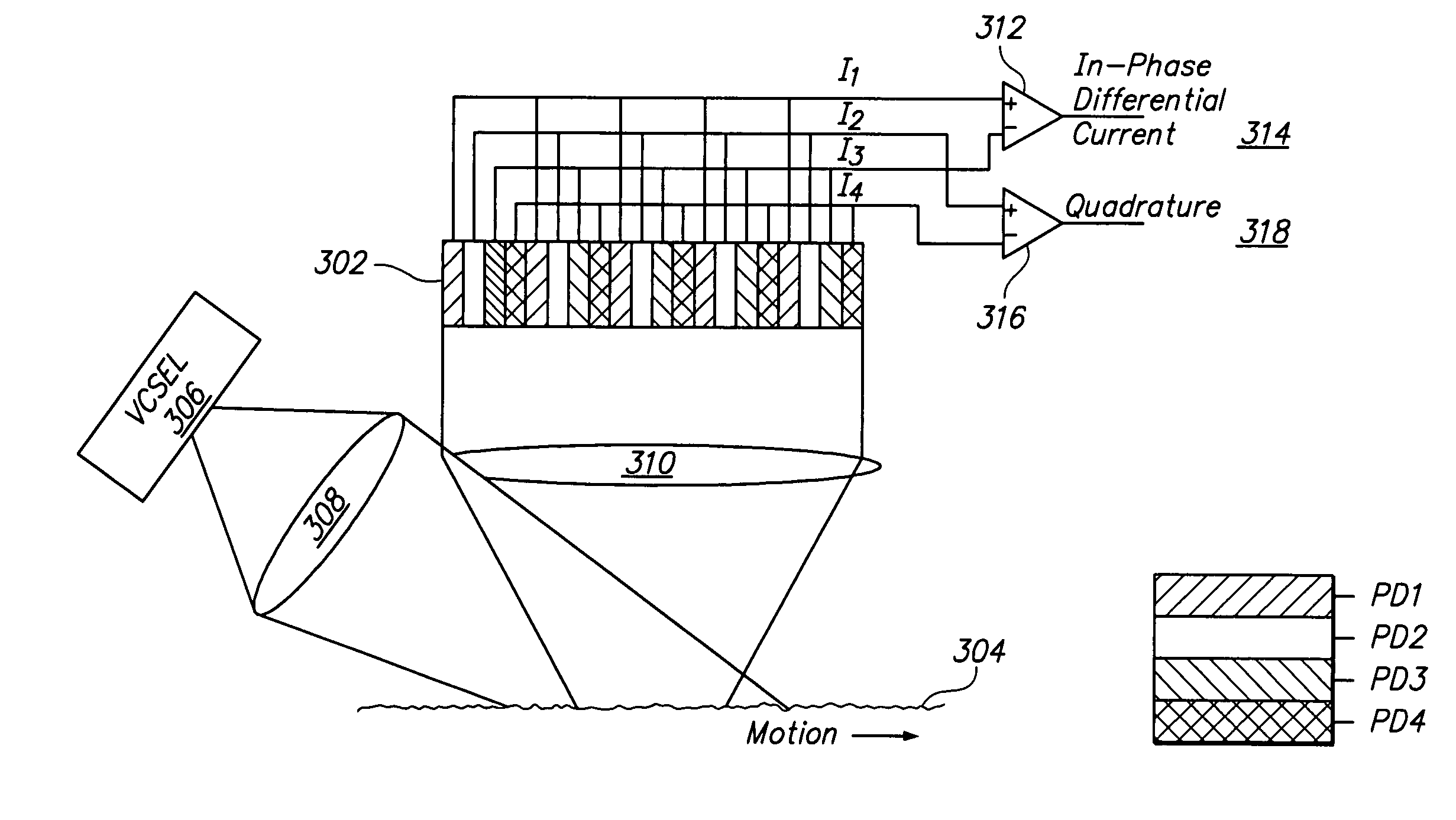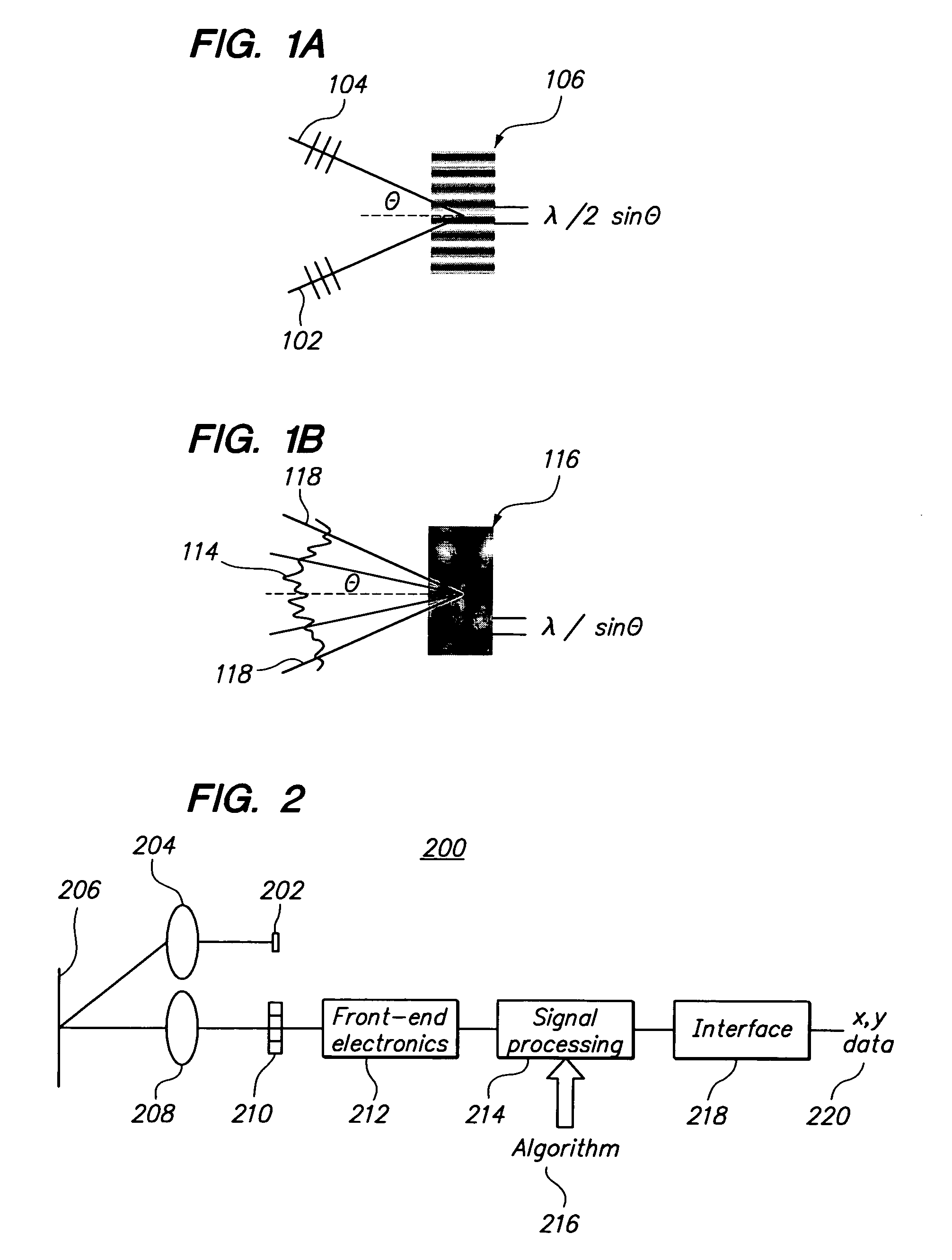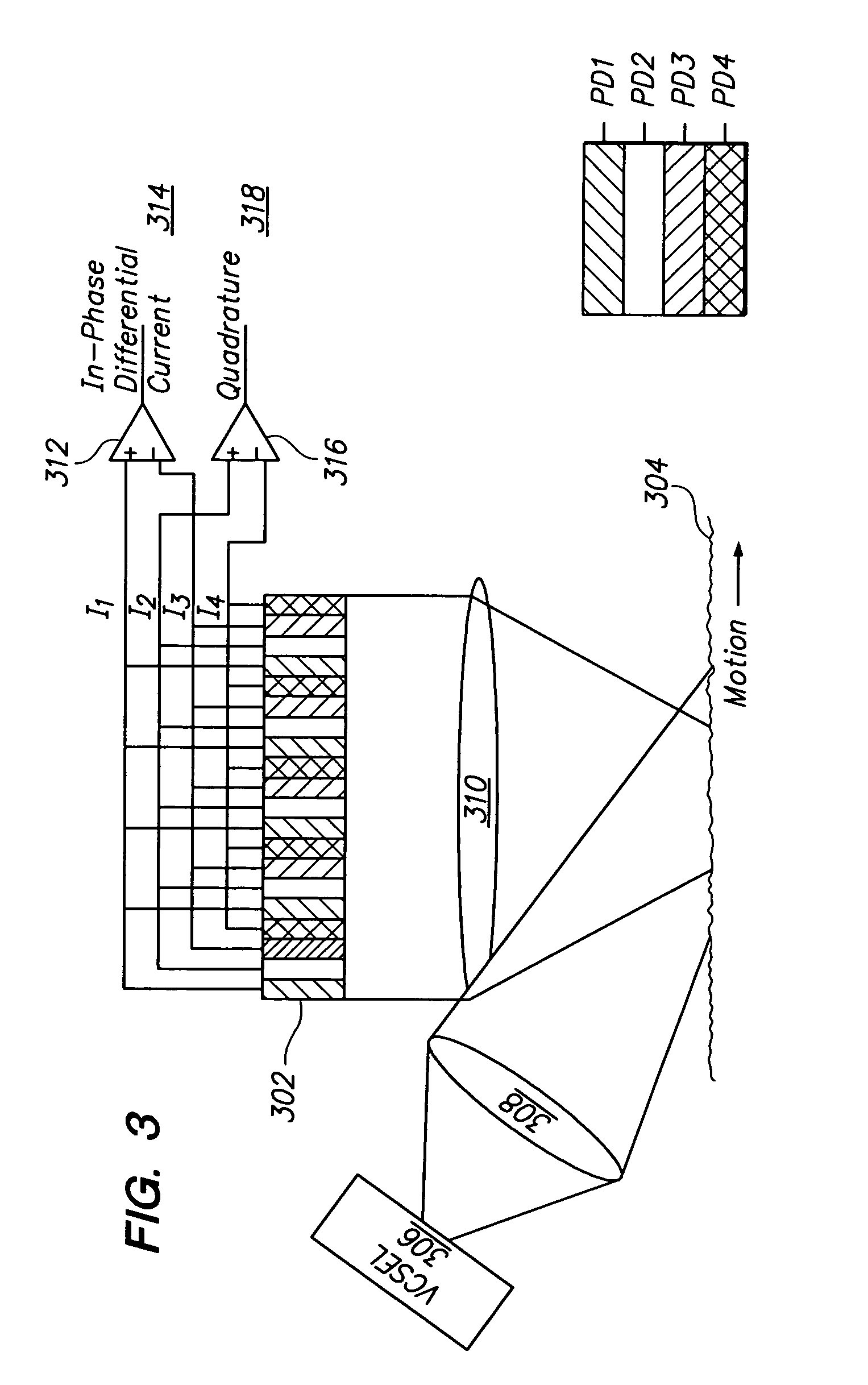Speckle sizing and sensor dimensions in optical positioning device
a technology of optical positioning and sensor dimensions, applied in the direction of static indicating devices, instruments, and reradiation, etc., can solve the problems of limiting the useful life of the device, prone to inaccuracy and malfunction, and low optical efficiency, and achieve relatively high image processing requirements
- Summary
- Abstract
- Description
- Claims
- Application Information
AI Technical Summary
Benefits of technology
Problems solved by technology
Method used
Image
Examples
Embodiment Construction
Problems with Speckle Detection
[0022]One problem with prior speckle-based OPDs is that speckles in the imaging plane are sometimes too small to be properly detected. This reduces the sensitivity and accuracy of the OPD. A related problem is that increasing the speckle size too much may substantially reduce the resultant signal-to-noise ratio.
[0023]Another problem with prior speckle-based OPDs is that the image analysis of the speckle pattern is sensitive to statistical fluctuations in the speckle pattern. Because speckles are generated through phase randomization of scattered coherent light, actual observed speckle can exhibit local patterns which do not have the expected average speckle size. In other words, while the speckles have a defined size and distribution on average, local patterns may be inconsistent with the average.
[0024]As discussed in detail below, one aspect of the present invention discloses a solution to both the above-discussed problems of speckle detection and sta...
PUM
 Login to View More
Login to View More Abstract
Description
Claims
Application Information
 Login to View More
Login to View More - R&D
- Intellectual Property
- Life Sciences
- Materials
- Tech Scout
- Unparalleled Data Quality
- Higher Quality Content
- 60% Fewer Hallucinations
Browse by: Latest US Patents, China's latest patents, Technical Efficacy Thesaurus, Application Domain, Technology Topic, Popular Technical Reports.
© 2025 PatSnap. All rights reserved.Legal|Privacy policy|Modern Slavery Act Transparency Statement|Sitemap|About US| Contact US: help@patsnap.com



